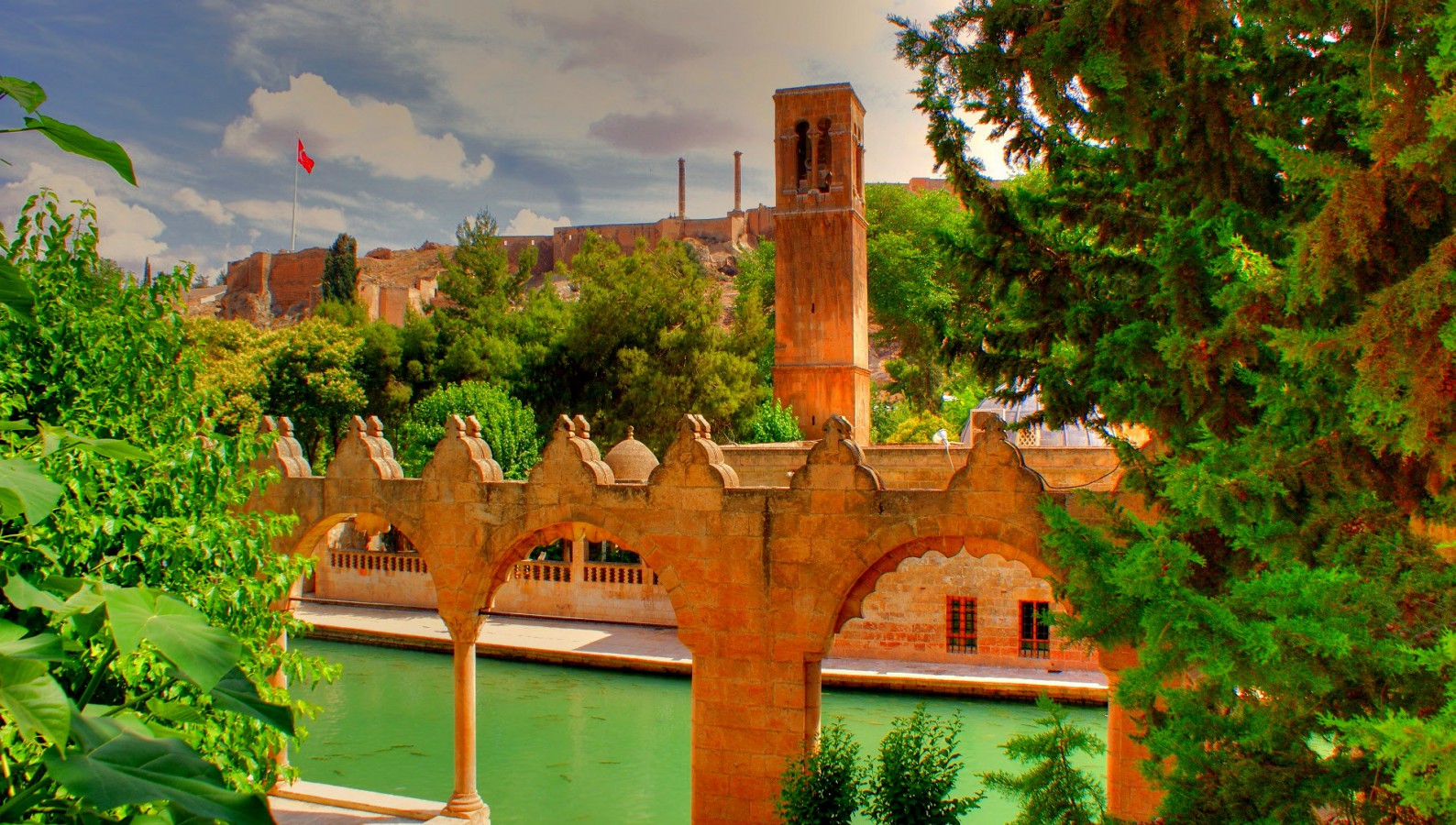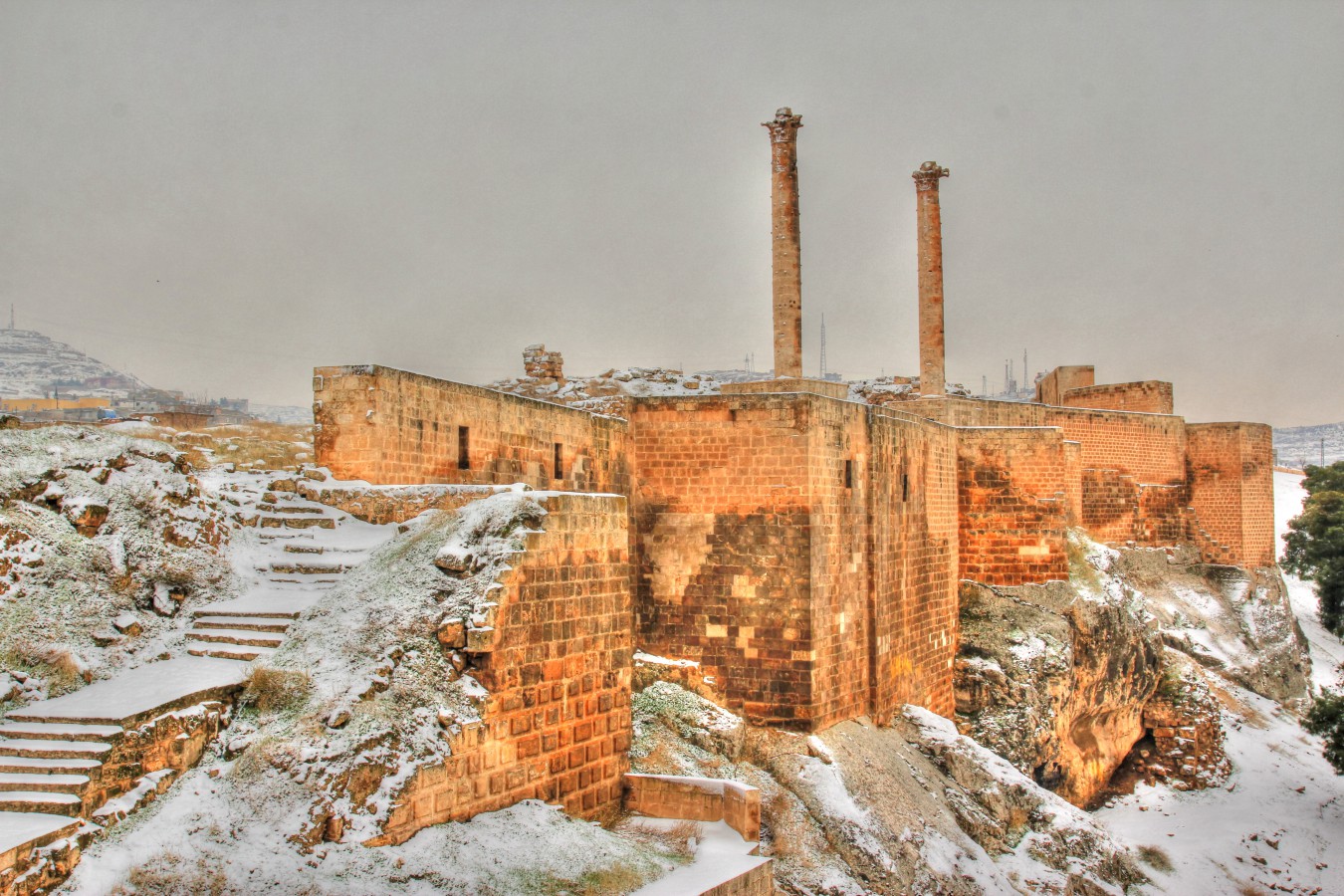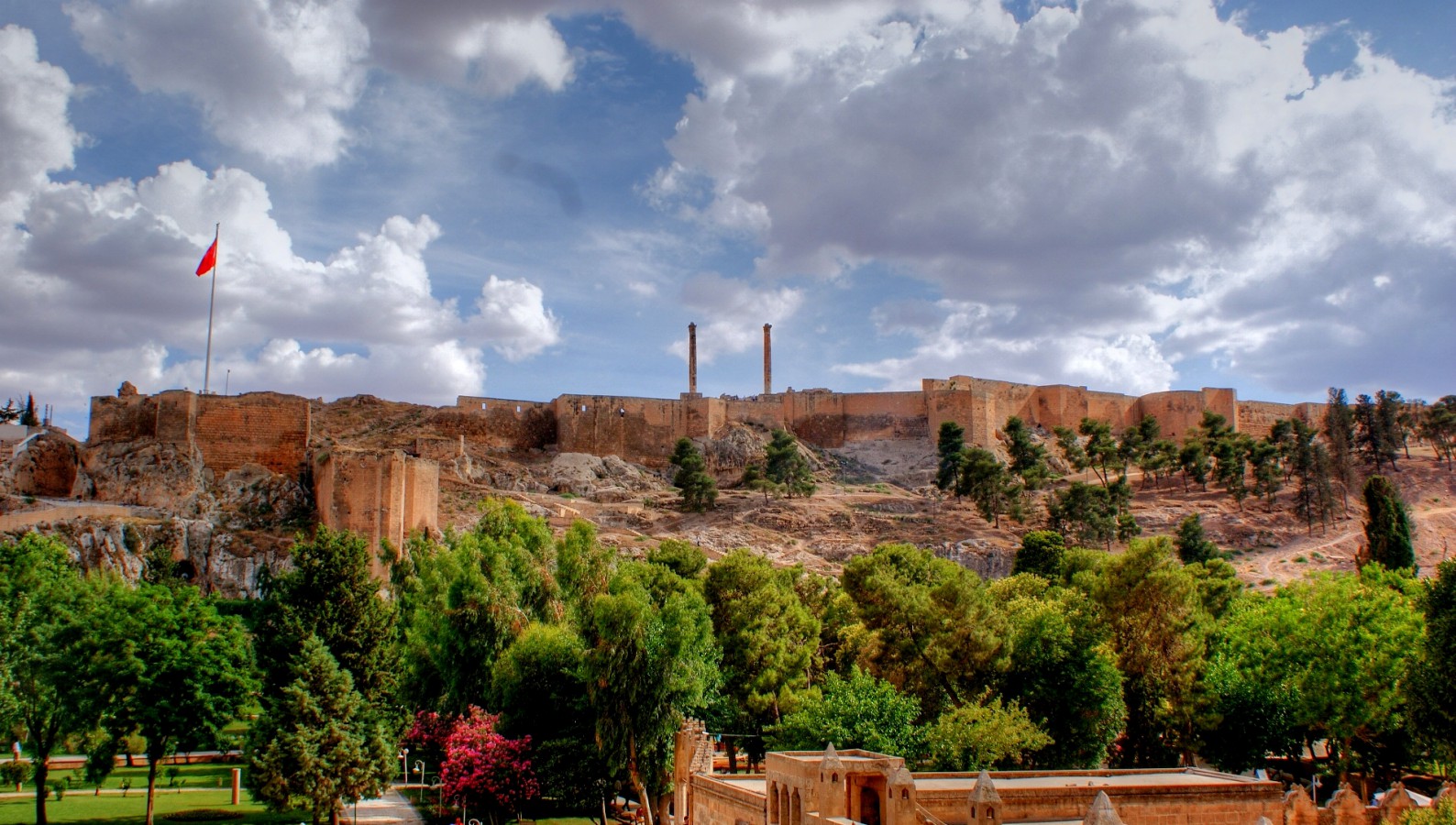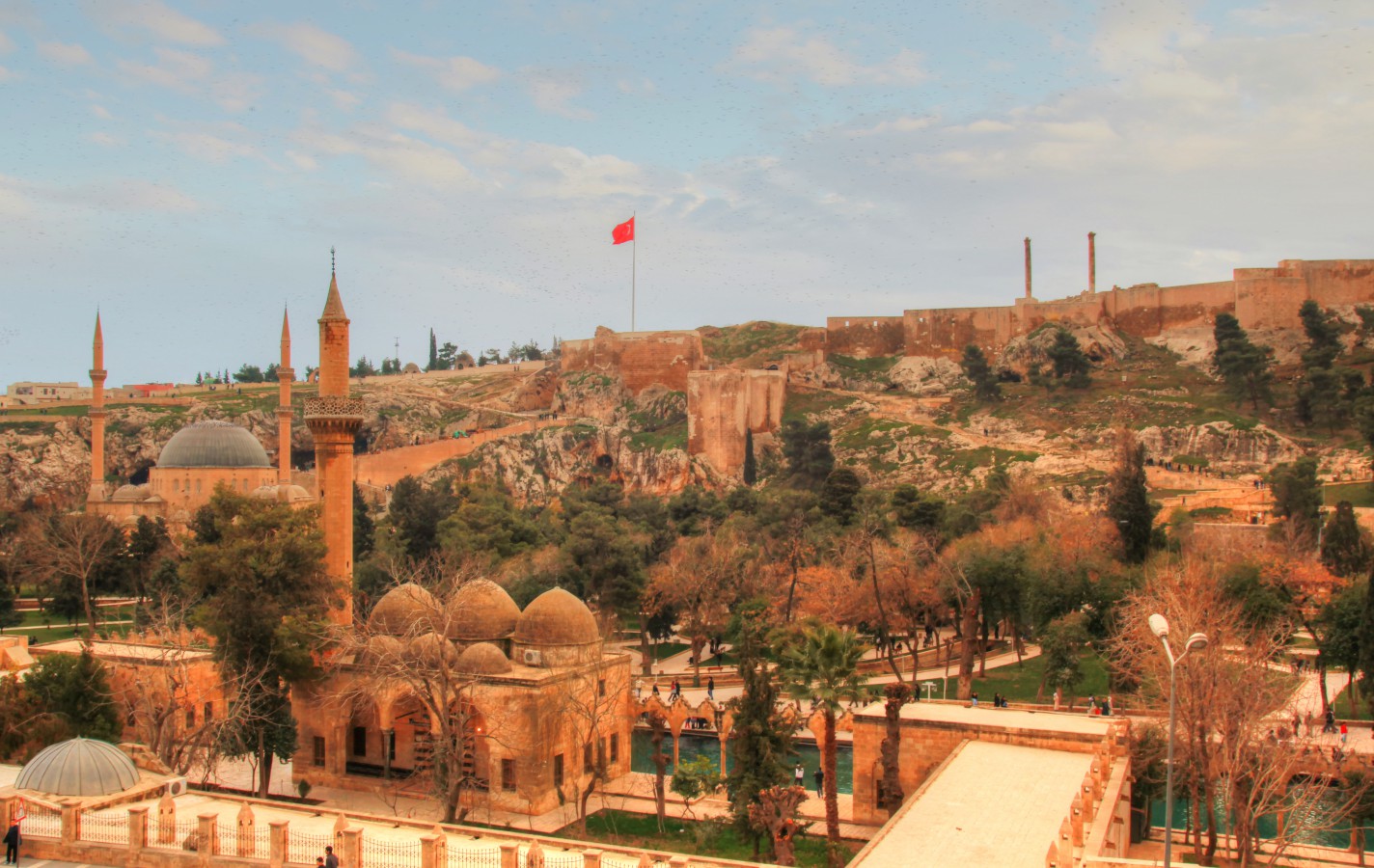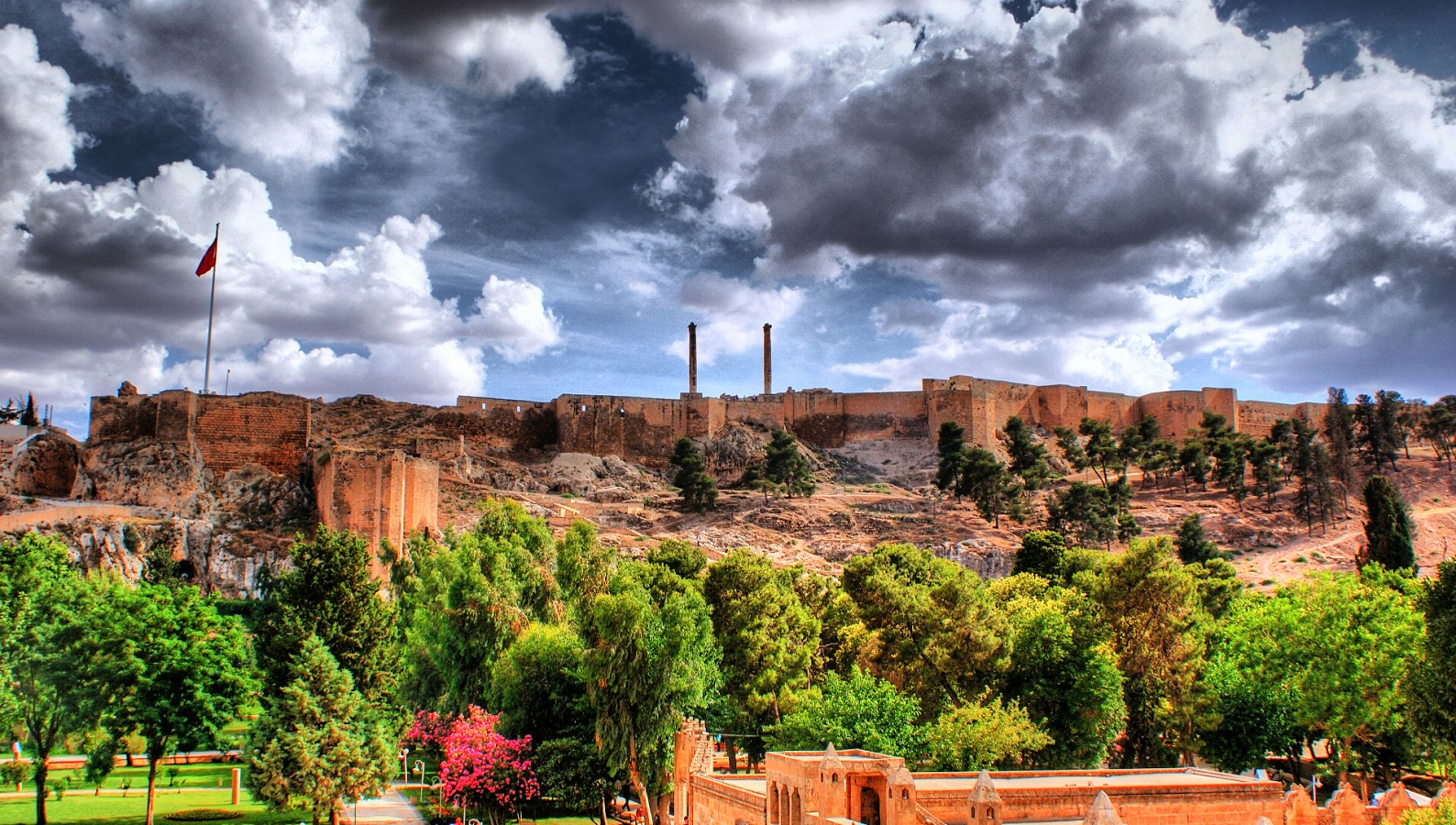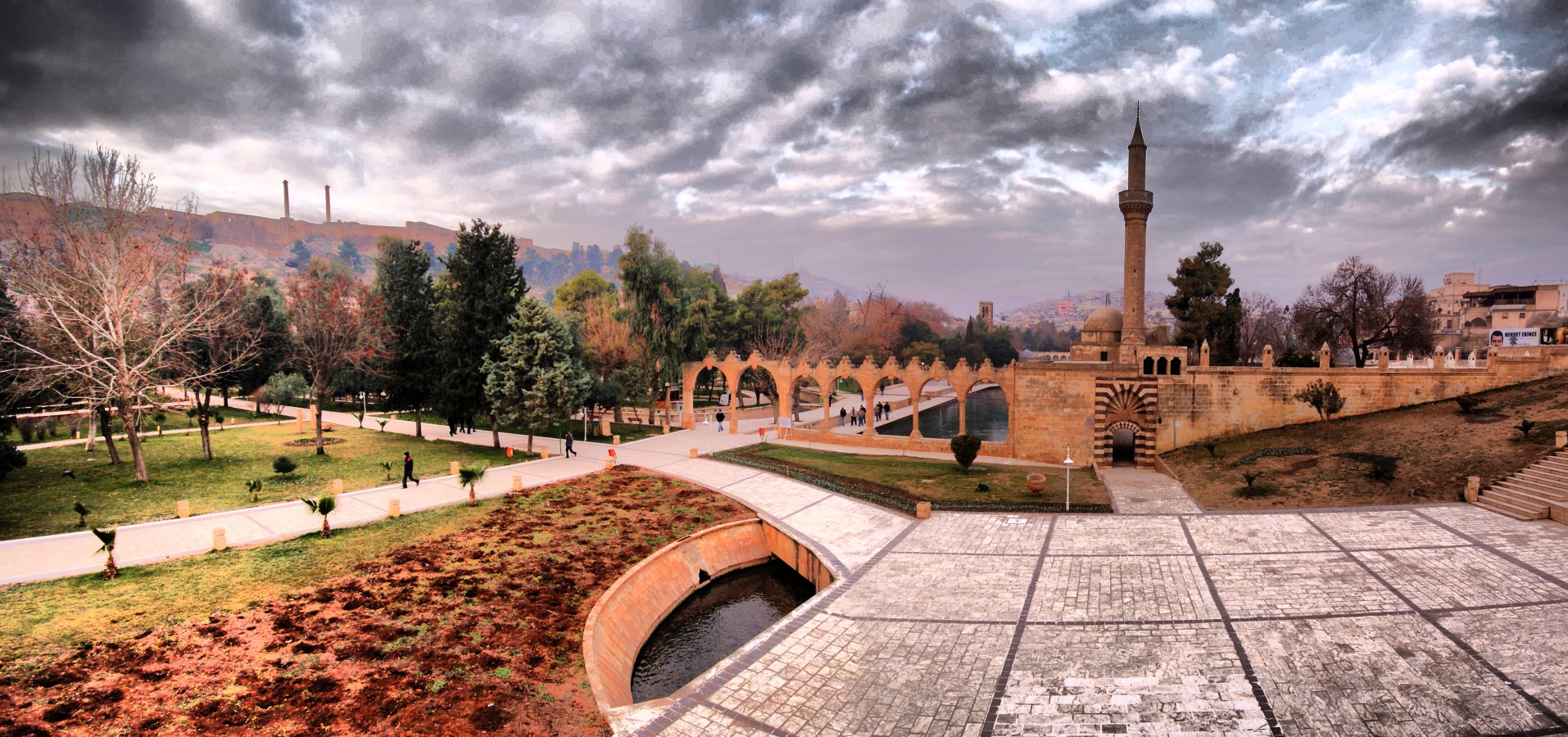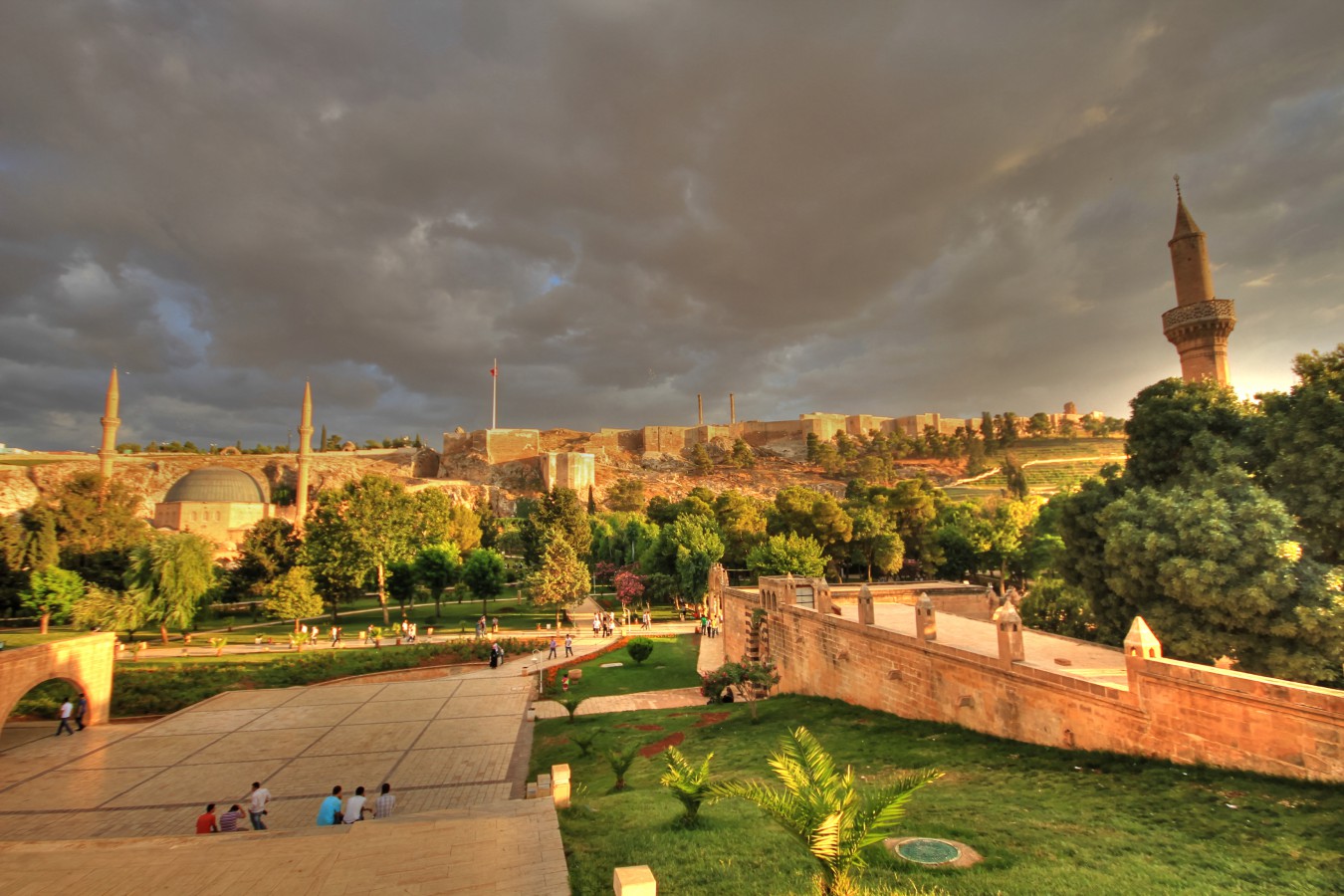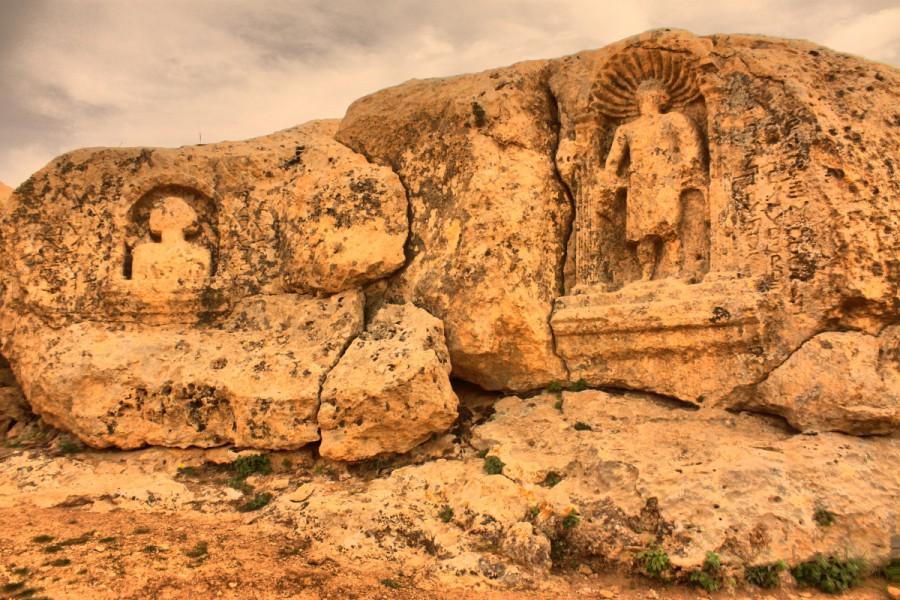Urfa Castle
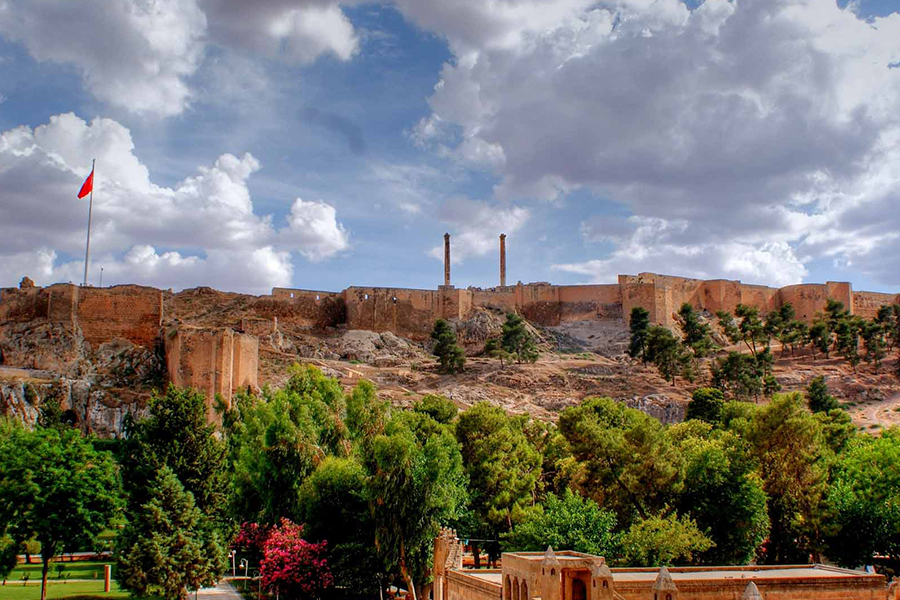
It is estimated that Urfa Castle was built on a Neolithic site dating back to 10,000 BC. The 12,000-year-old Balıklıgöl Statue and Castle area, which were unearthed next to the castle and exhibited in the Şanlıurfa Museum, reveal the history of the Balıklıgöl basin. There is no mention of the castle in records from the 6th century. The first records related to the castle belong to the 11th century. Accordingly, the castle can be dated between the 6th and 11th centuries. The accepted view regarding the castle is that it was built between 812-814 AD during the Abbasid period. The two columns with Corinthian capitals on the castle were built as monumental columns during the reign of 9th MANU of Edessa Karalı between 240-242 AD. The Syriac inscription on the eastern column reads: "I am AFTUHA, the son of the military commander BARŞAMAŞ (Son of the Sun). I made this column and the statue on it for the daughter of the crown prince MANU, the wife of king MANU, my lady and benefactor, Queen ŞALMETH." Urfa Castle is surrounded by a rock-carved moat on three sides. In addition, the Aynzeliha Tunnel provides a passage between the castle and Lake Aynzeliha.
How Can I Go?
You can reach Şanlıurfa Balıklıgöl with the R2 bus line departing from Meeting Center 1 - T1, the 24 bus line departing from Eyyübiye and the 63 bus line departing from Meeting Center 2 - T2.

